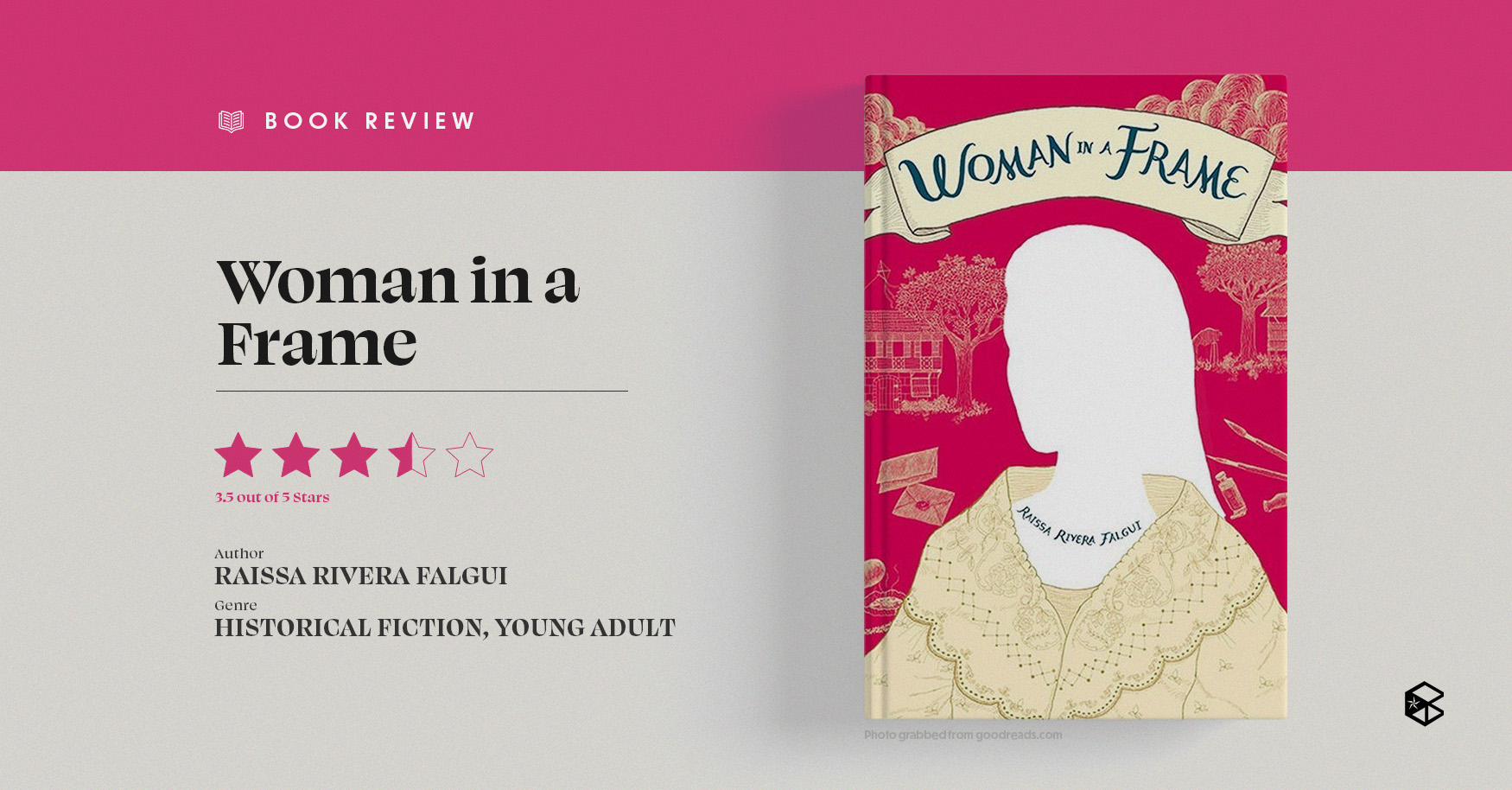Raissa Falgui’s Woman in a Frame intricately weaves history beyond mere dates and events, inviting readers to immerse themselves in the lives of its characters. Join Ning as she happens upon a mysterious painting hidden away in the back of a gallery and unravels the secrets that lie within each brushstroke as the story jumps between the bustling city of Manila in 2000 and the reflective landscapes of Laguna in 1986—capturing the nuances of complex friendships and yearning for the impossible.
The story introduces two protagonists, Sining and Marcela. Both girls have a deep-rooted respect for the arts, trying to make it out into the world. With the former being in modern Manila and the latter being in Spanish-colonial Laguna, though their situations and opportunities are vastly different, their hearts and minds are familiarly connected, tethered through blood, culture, and passion.
From her deep love and passion for uncovering the women artists of the Philippines, Falgui has woven a timeless story with themes of bravery and perseverance resonating with all ages and backgrounds—creating a novel that does not shy away from historical facts and even confronts its realities.
Dynamics, dialogue, and the rush
Falgui writes about female characters and their relationships with such depth and nuance—creating vivid imageries of their personalities through descriptive mannerisms or an expressive passage on the difference between their art styles. When Marcela’s father is commissioned to do a portrait for Raquel Rios—the daughter of one of the wealthiest families in their town—the two women find themselves entangled in a rather strange friendship, an odd sight for the townsfolk and even likened to Juan Luna’s “España y Filipinas.”
The shift of dynamics between Marcela and Raquel was artful, taking the reader by the hand and suggesting that through their subtle detestation for the other, there was still room for subtextual growth and personal reflection in their blossoming bond.
There is a scenario wherein the main character corrects the other’s bland and flat painting, adding life and even a ‘glow’ to it. In a way, this alludes to Marcela giving life to Raquel’s lonely and snappy disposition—no longer a nuisance to a lengthy portrait painting session but rather a welcome visit to a friend.
Yet, the foundations of this bond crumbled underneath pressure simply because of a dashing suitor. The author ties this in well by reflecting this damaged friendship into the complex issues of social class that reverberated throughout the Philippines—addressing both Spanish-Filipino and Chinese-Filipino discrimination in the story.
However, even though character-to-character interactions are fluid in this novel, it leaves readers wanting more from its secondary characters. With enough time within the book, the Simbulans, a family of Filipino artists who are known to specialize in letra y figuras, portraits, and seemingly all physical art forms under the sun, created vibrant imagery between each sibling and how they interacted with each other as a whole. Yet, those like Raquel, Julio, Jed, and even Ning are used as points to move the plot forward. That is to say, they create an intriguing dialogue with the main protagonist, but as stand-alone, they are not as expanded but rather connotative.
Take heart and persevere
Woman in a Frame shone a spotlight on the distressing realities that came with living in the Philippines under Spanish rule. It touches on brief encounters with lustful friars, the price of being a revolutionary, and the role of women in society. Falgui has written it in a natural way that does not deter readers from delving deeper into the narrative, incorporating it into details and dialogue that even children could easily understand.
This novel is not set in fantasy but rooted in real history, all told from the perspective of such passionate young girls who remain resilient even in their hardships.
The tone of the story follows a positive one despite its themes of love and loss. Such hope triumphs over the obstacles that constantly make characters question their place in their world, in the reality being set for them. It tells of all kinds of love, whether it be romantic, platonic, familial, or self-love, and how it manages to persevere and help whenever it can—through the masterful stroke of a paintbrush, in a colourful arrangement of a corsage, and a peek into the backrooms of a gallery.
So, keep following those passions—there are generations behind us that have worked tirelessly to let the future experience that kind of joy. To be full of artistic wonder, deep-seated with that appreciation for all those who came before us.
Woman in a Frame is available online through The Learning Basket and Shopee. It may also be obtained through physical bookstores and libraries near you.


